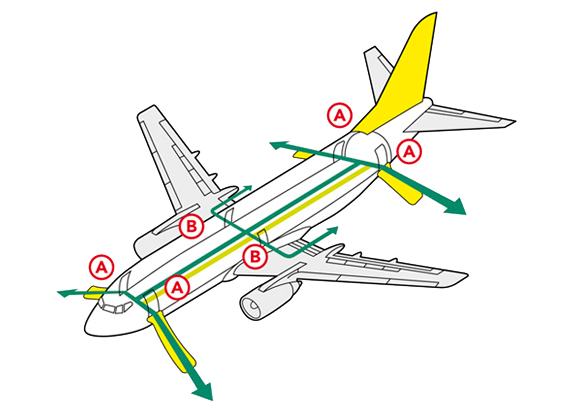Every now and then I think it’s important to review some ways to help survive a plane crash. We hear about these crashes in the news because when they do happen, they are often a big deal, however it’s important to remember that overall, flying is very safe. You’re still more likely to get into an accident on your way to the airport than from taking off or landing at one. Here are five simple tips to help your chances of survival in the very unlikely event of a crash.
1. Know Your Environment – Once you make it to your seat, take a look around. Where are your nearest exits? Are there any right behind you? It’s also a good idea to count the number of rows to these exits. In the event that the cabin becomes full of smoke and vision is limited, you still want to be able to find your way out. Because crashes usually only happen during takeoff or landing these are the key phases of flight to be alert. If you are seated at a window or near an exit row, make sure your shade is open during this time. If you see that your side of the aircraft is affected during the crash and those exits are unusable, you may need to cross to the other side of the plane to get out.
2. Keep Your Shoes On – The first thing that people do when they get to their seat is try to get as comfortable as possible which sometimes includes taking off footwear. While this is perfectly fine in the air, two times you’ll want to keep them on is during takeoff and landing. If something happens and there is broken glass or other sharp objects on the floor, you want to be able to get out as quickly as possible without injuring your feet.
3. Watch the Safety Demonstration – This is the single most important tip of all. Whether it’s a live demo performed by the crew or a video, it’s highly important to pay attention. Many people who fly often think that it’s all repetitive and they already know the information. But keep in mind that not all aircraft are the same. Some differences might include the number of exits and location. Whether or not certain exits should be used in a water landing. Whether your seat cushion is your flotation device or if you have a life vest under your seat and how you correctly put on that vest.
4. Fasten Your Seat Belt Low and Tight – While airline seats are made to withstand impact, the most important part of the seat is the seat belt. Make sure you have it low and tight around your waist any time the seat belt sign is illuminated and even a little more tighter during takeoff and landing. Every centimeter of slack in your seat belt triples the G-Force you’ll experience in the crash, so keep it snug!
5. Leave Everything Behind – In a situation where time is everything, the last thing you want to do is try to carry your luggage off the plane during an emergency. Not only will it slow you down along with everyone behind you, but depending on the size, it could also become a barrier for passengers to get around. Just remember, no matter what it is, it’s not as important as your life.
If you ever do become involved in a plane crash, just try to remain calm and get off the plane as quickly as possible while obeying the flight attendants’ instructions. They undergo rigorous training to be prepared in the event of an emergency and your safety is very important to them. Safe Travels Everyone!





 American Dollar Converter
American Dollar Converter






Thanks for sharing your knowledge on this topic. I hope we never need to use it, but if we do, this is great advice to remember. Being aware and prepared may help us to stay calm enough to save lives. Thanks again!